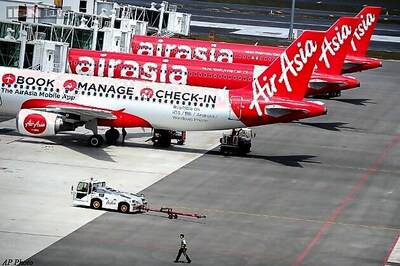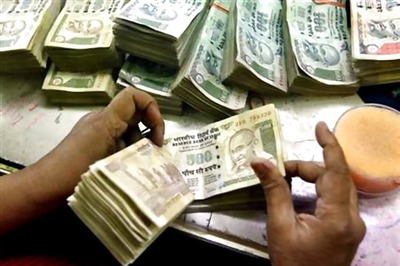
views
Many believe it is dead. For us in the television business, after the horrific blasts, we saw the Mumbaikar rise to the occasion as few citizens of other metros seem to be able to do. We saw vehicle owners taking the dead to hospital. We saw home owners handing out food. We saw strangers comforting each other. Bed sheets appeared out of nowhere. Corpses were laid out on the platform. The tracks were cleared. Anonymous hands reached for the injured through the mangled metal. We reported this as faithfully as we could because we saw stories of undoubted courage and fortitude.
But a battery of self-appointed media critics became unhappy. They rained abuse on us. The cribbed and scoffed. They said we 24-hour news channels eulogise the Mumbai spirit too much. We sensationalise. We fictionalize. We are not deep enough. We are not complex enough. We are unable to understand that its simply the survival urge that drives the Mumbaikar back to work and not the so called "Mumbai spirit."
Sure, a reality check is due. India's foremost megalopolis is turning inwards. There are few mixed localities left and cosmopolitanism is under strain with those with Muslim surnames finding it difficult to rent a house. Last year, a cloudburst pushed Mumbai monstrously to the brink. The Bombay Municipal Corporation is perhaps the singularly most corrupt civic body in the country. When the floods submerged the city, the BMC weakly responded that the drainage was faulty for over a hundred years.
If 2005 was the year the civic authorities were exposed, 2006 has been the year the police has come under the microscope. Since the 1993 serial blasts, police intelligence systems have considerably weakened even as the terrorist machine has become even more sophisticated. Ask any honest police officer in Mumbai, and he will tell you horrifying tales of rate cards for promotions and transfers, of demands for better resources and technology being lost in files, of intrigue and
interference at every level. Two years ago, the Telgi multi-crore stamp scam revealed how the rot in the police force had reached the very top. Instead of playing tough cop with the terrorist, the Maharashtra government seems to find greater joy in playing moral policeman, then whether it is seeking to close down dance bars or investigating fashion shows.
Indeed, not much appears to have changed between 1993 and 2006. The Shiv Sena is still around, weaker and badly splintered, but still with the capacity to unleash a mob to burn buses. Sharad Pawar may have packed his bags and become a Dilliwallah, but his legatees in the Congress-NCP alliance are still unable to look at Mumbai as anything more than a business opportunity. The underworld still endures. Dawood Ibrahim may be in a safehouse in Pakistan, but the vacuum has been filled by even more dangerous terror groups. The criminal justice system remains in a crisis. No one has been convicted as yet for the 93 serial blasts and several accused in the subsequent blasts have been let off. There is still no sign of urban renewal, with over 60 per cent of the population living in shanties that occupy 13 per cent of the land space while 10 per cent of the population lives on the footpath.
In this state of urban anomie, the romantic Johnny Walker spirit-of-Mumbai is perhaps simply a celluloid illusion. Perhaps it is gritty paapi pet ka sawaal that drives the Mumbaikar back to his job, the day after his commuter train was blasted. Dull helplessness seems to be the opposite number of the happy go lucky resilience. Yet gaze a little closer and you'll find that between the two polar opposites of celebration of the "Mumbai spirit" and doomsday predictions of "no spirit only hopelessness," there is another truth that lies in the middle. Ask the question: which network actually worked during the blasts? The roads? No. The police? No. The mobile phones? No. The network that actually worked was the human network. The average Citizen-Mumbai who ferried the wounded to hospital, who ripped through metal to extricate fellow travelers, who donated blood, drove the stranded, fed the hungry and sheltered the lost. Within half an hour the injured had been taken to hospitals. It was Citizen Mumbai who took them there, hours before the official agencies like the fire
brigade or the police arrived.
What the government in Mumbai needs to do therefore is empower Citizen-Mumbai not by eulogising his "spirit" but by actually providing facilities that allow his talents, his philanthropy and his inordinate energy to flourish. Don't get lost in romantic songs about "Salaam Mumbai", instead meet Citizen Mumbai half way. Ensure, first of all, that Citizen-Mumbai always has access to information. For this cellphones and internet services must be made much more widely available then they are. How many lives would have been saved if the rescuers had known exactly which hospital could cater to which
injuries and had this information beamed to them on the cellphone. If cellphones had worked hospitals could have sent out notices, saying where to take the wounded and how to get there. Empowering the Mumbaikar with information has to become the first duty of the city's government. If the Mumbaikar is constantly networked, constantly bombarded with all the information that he needs then imagine how far he would take his city. Already, this time, the bloggers and other media played a constructive role in disaster management. This development needs to be enhanced and allowed to grow.
I'm no urban planner but some measures seem to me to be very urgent.There needs to be a multiplicity of sites for Mumbaikars to work.There is no reason why 5.5 million need to come to come into central Mumbai to earn their daily wage. In the age of communication, of satellites, of the information super highway, Jogeshwari, Thane, Borivili can all be slowly but steadily transformed into satellite townships so that the working crowd is split up and decentralized.The
other crucial measure that the state must take to facilitate Citizen Mumbai is simple. Allow Citizen Mumbai to move. It is urgently necessary to create a road system that does not fall into gridlock, but that allows immediately the free flow of traffic, the free movement of people, so that in a crisis situation, Citizen Mumbai can rush to the rescue as he never fails to do. The state needs to allow Citizen Mumbai to be more of himself.
Already Citizen Mumbai is empowering himself. There are no calls to communal violence. Instead, there is a growing clamour for speedier justice, for ensuring that those found guilty in previous attacks are not spared. Last year, after the floods, several citizen groups filed court petitions demanding answers from the civic body. Now, similar answers are being sought from the law and order machinery. Maybe, the bindaas spirit was the creation of a more innocent time. Perhaps the media critics are right, that singing odes to Mumbai's resolve is a fiction. Yet at the same time I believe that it is the Mumbaikar who can save Mumbai and it is he who needs to be seriously and solidly empowered if the city is to survive.About the AuthorRajdeep Sardesai Rajdeep Sardesai was the Editor-in-Chief, IBN18 Network, that includes CNN-IBN, IBN 7 and IBN Lokmat. He has covered some of the biggest stories in I...Read Morefirst published:July 21, 2006, 14:16 ISTlast updated:July 21, 2006, 14:16 IST
window._taboola = window._taboola || [];_taboola.push({mode: 'thumbnails-mid-article',container: 'taboola-mid-article-thumbnails',placement: 'Mid Article Thumbnails',target_type: 'mix'});
let eventFire = false;
window.addEventListener('scroll', () => {
if (window.taboolaInt && !eventFire) {
setTimeout(() => {
ga('send', 'event', 'Mid Article Thumbnails', 'PV');
ga('set', 'dimension22', "Taboola Yes");
}, 4000);
eventFire = true;
}
});
window._taboola = window._taboola || [];_taboola.push({mode: 'thumbnails-a', container: 'taboola-below-article-thumbnails', placement: 'Below Article Thumbnails', target_type: 'mix' });Latest News
One of Mumbai's principal contributions to popular culture has been the creation of its own vocabulary. The word "bindaas" typifies Mumbai. It means a happy-go-lucky, fearless attitude. It's a spirit immortalised most memorably in Johnny Walker crooning on Marine Drive the Mohammed Rafi classic: "Ae dil hai mushkil.." It speaks of the great Mumbai dream. The penniless youth who becomes a tycoon and lives to sing a song about it. Is the bindaas spirit still alive?
Many believe it is dead. For us in the television business, after the horrific blasts, we saw the Mumbaikar rise to the occasion as few citizens of other metros seem to be able to do. We saw vehicle owners taking the dead to hospital. We saw home owners handing out food. We saw strangers comforting each other. Bed sheets appeared out of nowhere. Corpses were laid out on the platform. The tracks were cleared. Anonymous hands reached for the injured through the mangled metal. We reported this as faithfully as we could because we saw stories of undoubted courage and fortitude.
But a battery of self-appointed media critics became unhappy. They rained abuse on us. The cribbed and scoffed. They said we 24-hour news channels eulogise the Mumbai spirit too much. We sensationalise. We fictionalize. We are not deep enough. We are not complex enough. We are unable to understand that its simply the survival urge that drives the Mumbaikar back to work and not the so called "Mumbai spirit."
Sure, a reality check is due. India's foremost megalopolis is turning inwards. There are few mixed localities left and cosmopolitanism is under strain with those with Muslim surnames finding it difficult to rent a house. Last year, a cloudburst pushed Mumbai monstrously to the brink. The Bombay Municipal Corporation is perhaps the singularly most corrupt civic body in the country. When the floods submerged the city, the BMC weakly responded that the drainage was faulty for over a hundred years.
If 2005 was the year the civic authorities were exposed, 2006 has been the year the police has come under the microscope. Since the 1993 serial blasts, police intelligence systems have considerably weakened even as the terrorist machine has become even more sophisticated. Ask any honest police officer in Mumbai, and he will tell you horrifying tales of rate cards for promotions and transfers, of demands for better resources and technology being lost in files, of intrigue and
interference at every level. Two years ago, the Telgi multi-crore stamp scam revealed how the rot in the police force had reached the very top. Instead of playing tough cop with the terrorist, the Maharashtra government seems to find greater joy in playing moral policeman, then whether it is seeking to close down dance bars or investigating fashion shows.
Indeed, not much appears to have changed between 1993 and 2006. The Shiv Sena is still around, weaker and badly splintered, but still with the capacity to unleash a mob to burn buses. Sharad Pawar may have packed his bags and become a Dilliwallah, but his legatees in the Congress-NCP alliance are still unable to look at Mumbai as anything more than a business opportunity. The underworld still endures. Dawood Ibrahim may be in a safehouse in Pakistan, but the vacuum has been filled by even more dangerous terror groups. The criminal justice system remains in a crisis. No one has been convicted as yet for the 93 serial blasts and several accused in the subsequent blasts have been let off. There is still no sign of urban renewal, with over 60 per cent of the population living in shanties that occupy 13 per cent of the land space while 10 per cent of the population lives on the footpath.
In this state of urban anomie, the romantic Johnny Walker spirit-of-Mumbai is perhaps simply a celluloid illusion. Perhaps it is gritty paapi pet ka sawaal that drives the Mumbaikar back to his job, the day after his commuter train was blasted. Dull helplessness seems to be the opposite number of the happy go lucky resilience. Yet gaze a little closer and you'll find that between the two polar opposites of celebration of the "Mumbai spirit" and doomsday predictions of "no spirit only hopelessness," there is another truth that lies in the middle. Ask the question: which network actually worked during the blasts? The roads? No. The police? No. The mobile phones? No. The network that actually worked was the human network. The average Citizen-Mumbai who ferried the wounded to hospital, who ripped through metal to extricate fellow travelers, who donated blood, drove the stranded, fed the hungry and sheltered the lost. Within half an hour the injured had been taken to hospitals. It was Citizen Mumbai who took them there, hours before the official agencies like the fire
brigade or the police arrived.
What the government in Mumbai needs to do therefore is empower Citizen-Mumbai not by eulogising his "spirit" but by actually providing facilities that allow his talents, his philanthropy and his inordinate energy to flourish. Don't get lost in romantic songs about "Salaam Mumbai", instead meet Citizen Mumbai half way. Ensure, first of all, that Citizen-Mumbai always has access to information. For this cellphones and internet services must be made much more widely available then they are. How many lives would have been saved if the rescuers had known exactly which hospital could cater to which
injuries and had this information beamed to them on the cellphone. If cellphones had worked hospitals could have sent out notices, saying where to take the wounded and how to get there. Empowering the Mumbaikar with information has to become the first duty of the city's government. If the Mumbaikar is constantly networked, constantly bombarded with all the information that he needs then imagine how far he would take his city. Already, this time, the bloggers and other media played a constructive role in disaster management. This development needs to be enhanced and allowed to grow.
I'm no urban planner but some measures seem to me to be very urgent.There needs to be a multiplicity of sites for Mumbaikars to work.There is no reason why 5.5 million need to come to come into central Mumbai to earn their daily wage. In the age of communication, of satellites, of the information super highway, Jogeshwari, Thane, Borivili can all be slowly but steadily transformed into satellite townships so that the working crowd is split up and decentralized.The
other crucial measure that the state must take to facilitate Citizen Mumbai is simple. Allow Citizen Mumbai to move. It is urgently necessary to create a road system that does not fall into gridlock, but that allows immediately the free flow of traffic, the free movement of people, so that in a crisis situation, Citizen Mumbai can rush to the rescue as he never fails to do. The state needs to allow Citizen Mumbai to be more of himself.
Already Citizen Mumbai is empowering himself. There are no calls to communal violence. Instead, there is a growing clamour for speedier justice, for ensuring that those found guilty in previous attacks are not spared. Last year, after the floods, several citizen groups filed court petitions demanding answers from the civic body. Now, similar answers are being sought from the law and order machinery. Maybe, the bindaas spirit was the creation of a more innocent time. Perhaps the media critics are right, that singing odes to Mumbai's resolve is a fiction. Yet at the same time I believe that it is the Mumbaikar who can save Mumbai and it is he who needs to be seriously and solidly empowered if the city is to survive.




















Comments
0 comment